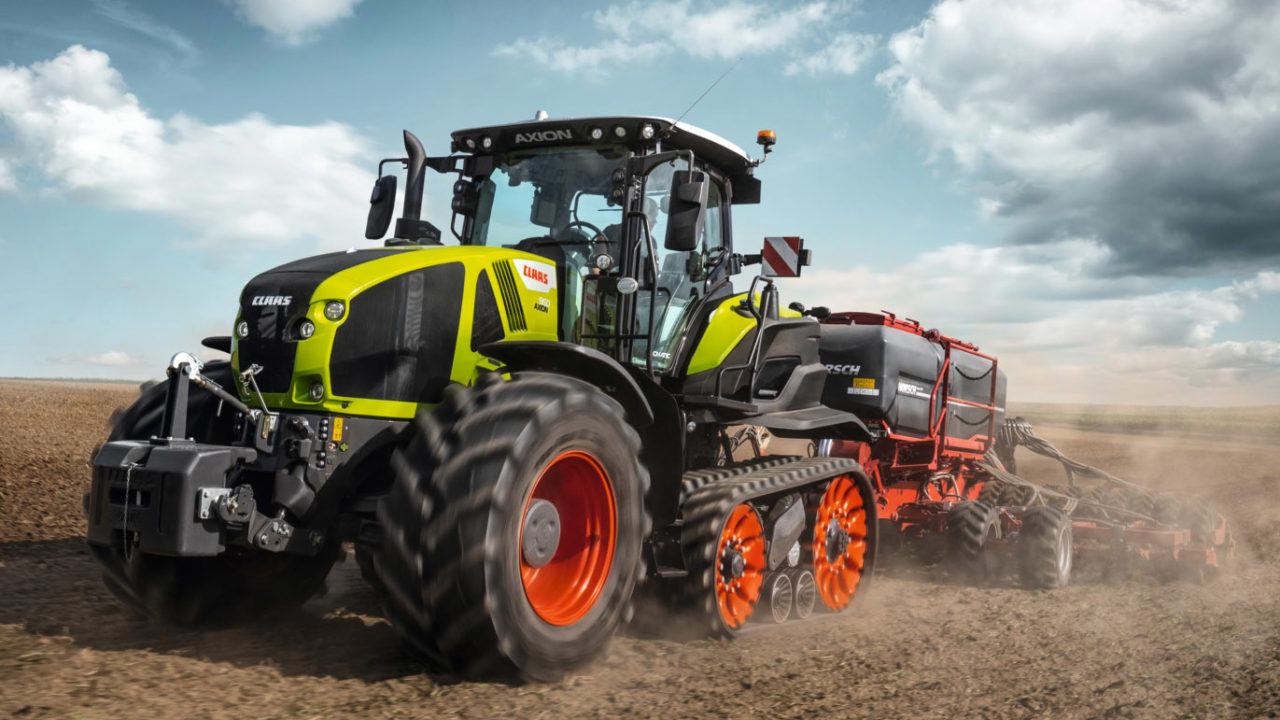This year marks 35 years of Claas fitting rubber tracks to its premium range of combine harvesters, and 25 years of producing them to their own design.
They are proving to be increasingly popular. In the first year just 10% of combines were ordered with them fitted, that now stands at 50% overall and up to 90% in the UK.
The Caterpillar connection
The first track units were brought in from Caterpillar and fitted to the late Dominator range. They served their purpose well, but, at 4m in width, they had the drawback of being too wide for European roads.

Claas wanted to produce something better and more suited to the home market. Thus it was in 1997 the company introduced its own friction drive units which have been developed and refined ever since.
Moving on a quarter of century and Terra Trac now has its own integral suspension and is able to reduce its effective length by lifting the front idler wheel when turning on headlands.

This latter feature may increase the ground pressure exerted, but it does reduce the scuffing of the soil or crop if turning on grass and is available on the Jaguar harvesters and the Axion tractor.
Axion halftrack
The Axion tractor, when fitted with Terra Tracs, is claimed to be the only purpose built half track tractor now available on the market.
This season, Claas has added a 457mm wide track to the three options already available.
This new, narrower width, is intended for row crop work in north America while the standard 635mm track will keep tractors to within the 3m width limit that has become the gauge for agricultural machinery on this side of the Atlantic.
Terra Trac as a product line
Claas has identified and branded Terra Trac as a separate product range and is busy looking for other applications in conjunction with implement manufacturers.
Trailers are an obvious option, especially those that need to operate in harvest periods that fall later in the year, potato haulage being a very likely candidate.

With the notion of electric PTOs being more regularly aired, Claas notes that the power source for the Terra Trac is irrelevant, just so long as there is an input shaft, it is immaterial what is turning it at the other end.
There is no hint that the company is looking at this possible development itself, but having a tractor capable of transmitting power to an implement by cable, rather than shaft, might well prove to be beneficial looking forward.
Optimum tyre pressure – automatically
When Axion tractors are fitted with Terra Trac, front axle and cab suspension, Claas suggests that there is little to beat it when it comes to driver comfort.
Add to the mix, the ability to alter the front tyre pressure on the move and it is also said that no other tractor can optimise its own footprint as well the Axion can.
For this season adjusting tyre pressures to best suit ground conditions has been automated via the CEMOS command system.

By entering parameters such as soil type and working depth, an optimum tyre pressure can be automatically calculated and the tyre pressure altered to best suit the conditions, with no further input from the operator.
The algorithms used were developed in conjunction with universities from Bern, Denmark and Sweden who have been collecting the necessary data from field studies for many years now.
And now for the future
The design engineers at Claas have spent a good deal of time and effort developing the concept over the years.
The company now appears to be promoting it as a separate product that is available to other manufacturers in a bid to cash in on what they have created.
Whether we see it on other tractor brands is an open question, yet it is likely to appear on non Claas products over the next few years as implement makers come to appreciate its virtues.
